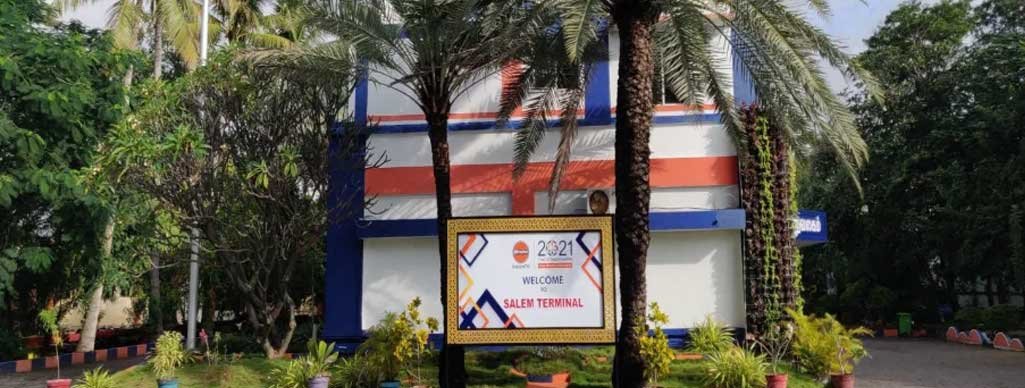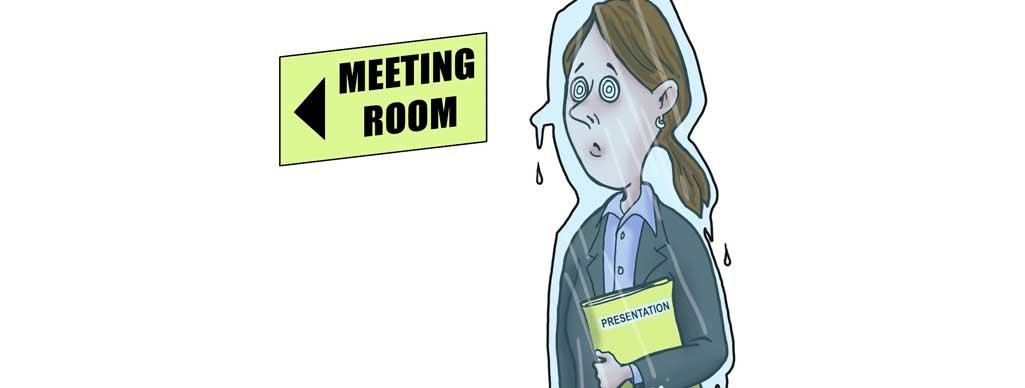
Sabitha Natraj, IOCL
snatraj@indianoil.in

‘Everything is connected with everything else’ – this first law of Ecology by micro-biologist & environmentalist Dr.Barry Commoner summarizes, the indelible interlinked associations of Nature and its inhabitants.
This in its simple and profound form highlights the need for sustainable living by organisations and its citizens. Current organisations and consumers are part of a complex and unprecedented cocktail of social, environmental, market, and technological trends.
Ancestral living leaned extensively towards sustainable practices- which respected nature and leveraged the best of its resources. This was evident in their food and lifestyle practices. This undoubtedly gave rise to a competitive advantage of general well-being and healthy generations.
ECO-WARRIORS- Connecting the dots
Saving our planet, lifting people out of poverty, and advancing economic growth are ecological and societal concerns of administrators. The underlying truth is that all these factors revolve around one and the same fight. We need to connect the dots between climate change, water scarcity, energy shortages, global health, and food security including women’s empowerment. Solutions to one problem is in effect solutions for all.
Take the case of Mr. G.Parthasarathy, Retd IOCian. He is an ECO WARRIOR who follows enviable environmental practices and is able to realise its economic benefits too. His residence aptly named Vengudi has become a model house for green practices and systems. All the best practices emanate fromhis deep-rooted respect for nature and appreciation that ‘there is nothing known as waste in nature’s creation. Everything can be recycled, reused”.
All Rainwater from the roof top of his building is collected to a harvesting pit on ground floor, recharging the adjacent well, Bore well and maintaining the ground water table. The bathing water & Kitchen used water are filtered through straw dust, charcoal and mud; which are collected and pumped to overhead tanks to water his terrace garden.
The kitchen vegetable waste & pooja room flowers are diligently collected every day and converted into natural compost manure for terrace garden plants and avoiding usage of pesticides. He has installed a 3KW Solar Power Plant to electrify his lightings and gadgets.
A fine forest type Terrace Garden contains fruit trees Sapotta, Neem, Pomegranate, Mango, Plantain,Nelli, Papaya,and Guava trees and beautiful floral and medicial plants: Jasmine, Shenbagam,Arali,Sangupoo,Hibiscus etc. The two storeyed house has been thoughtfully built with concrete hollow blocks to reduce heat transmission inside.
These efforts are enabling him to save nearly 2.8 lacs annually in maintaining his house. He is an ECO WARRIOR who showcases that Sustainable practices are economically beneficial and provide sustainable returns.
ECONOMICS OF SUSTAINABILITY
Unilever’s sustainability slogan, ‘Small actions can make a big difference’ inspired its workers to improvise and innovate to reduce waste. Unilever workers at the company’s tea factory had a bright idea. Most tea comes in paper tea bags. The workers gave the idea that by reducing the end seals of each tea bag by 3 millimetres, 15 huge reels of paper could be saved every shift. This factory-floor suggestion has resulted in savings of nearly Rs. 42lacs per annum and 9.3 tonnes of paper.
Similarly, in early 2015, at the Unilever factory in Khamgaon, India, six employees approached the factory manager with the idea of starting a beauty and hair care course in their village to help local women get a job or start a business, while at the same time promoting Unilever’s personal care products. Management gave the green light, and the training center was launched. To date, 825 women have been trained, and 610 are working in beauty parlours or have started their own businesses.
These highlights profile the economic, social and environmental advantages of adopting sustainable practises. In essence integrating sustainability into every employee’s job and turning ‘business as usual’ into a sustainable business model is perhaps the secret sauce for widespread adoption of sustainability.
Salem terminal at Tamil Nadu Office, IndianOil Sought to adopt this model of replacing ‘business as usual’ with ‘Sustainably operable terminal’- resulting in considerable operational savings and earning itself a PLATINUM certification from GREENCO unit. The unit embedded sustainability in every employee’s job profile: they established water, waste and energy management teams or cells to monitor and offer suggestions for improvements.
The water management cell reviewed per capita consumption of water on a monthly basis, set targets to reduce water consumption, constructed a centralized domestic supply tank, Web-enabled smart water meters for live analysis of water consumption, waterless urinals, dual flush tanks, water tap aerators and sprinklers for lawns. Three numbers of phytoremediation plants, 17 nos of rainwater harvesting pits for a total rooftop area of 4440 sq.mts were installed. These measures have enabled efficient use of water and resulted in considerable savings to the terminal.
Restoration of the nearby pond with desilting has been carried out. Salem Terminal ensures ban of single use plastic in its premises, re-use of scrap materials, has a bio-remediation pit for oil waste treatment, organic waste convertor for food waste, pneumatic pumps for unloading additives, Fast Flush System for Aviation QC checks, Closed Loop System for Fuel Top Up, provision of Nitrile Caps for Tank Wagons, proper Segregation of Waste, Skimmer for oil water separator (OWS), Annual Monitoring of Ambient Air Quality and Noise Level are significant efforts that has resulted in overheads savings.
Moreover, Lights with PIR motion sensors have been installed in office cabins, washrooms, conference rooms, toilets etc. Due to the installation of these, the total power savings is to the tune of 24.96 KWh per annum per light. Normal fans have been replaced with super efficient BLDC Motor fans, reducing energy consumption by 65%. This has resulted in a power saving of 113 KWh/year/fan and cost saving of Rs. 1460/year/fan. Pipeline receipts for ATF has eliminated the need for Tank Wagon operations resulting in energy savings to the tune of 14,040 KWh per annum. In addition to the energy and logistic savings, there are huge savings in stock loss.
Salem terminal has established that adopting sustainable practices leads to considerable economic savings and is a distinctive competitive advantage.
SUSTAINABILITY’s MISTAKEN IDENTITY
While sustainability is a proven business model, it still suffers from wider performance attention from companies. Many a times sustainability is mistaken to be CSR activities, tree plantation efforts or simply maintaining expansive gardens, Just as many people confuse the weather for climate! (when climate change is discussed they look upto weather forecasts)
Lack of personal involvement, and at times even acknowledgment, by business managers of the importance of sustainability, is a deterrent for adoption of sustainability practices.. The typical reaction by many is: “Yes, it’s important, but it’s someone else’s job, and I have more important things to do.”
Sustainability is about prioritizing people and planet before numbers. It is about prioritizing the lives of people today and tomorrow in the planet, before the abstraction of revenue model numbers. Embedded sustainability efforts clearly result in a positive impact on business performance.
The need of the hour is to operationalize sustainability goals. The problem is that companies face challenges when they need to link their employees’ values and organisational business objectives to sustainability adoption processes and procedures. In other words, it’s not in the why but in the how of embedding sustainability where the gap lies.
Devising a roadmap for the ‘how’ of embedding sustainability practices to improve business performances is the immediate challenge that sustainability professionals face. The business case for Sustainability being a distinctive competitive advantage has been adequately established.
Posted in Health & Wellbeing | No Comments »
Recent Articles
- Navigating Leaves: Balancing Connectivity and Breaks in Today’s Workplace
- Boost Your Productivity with the Pomodoro Technique
- The Busy Professional’s Guide to Self Care
- Mental Health @ Work
- Mental Health and Well-being
- Positivity: Why you should make a New Year’s Resolution
- Get To Know About Nomophobia
- Fuelling Health: Energy of Our Body
- Keep Running
- Is Living Alone a Curse or a Boon? No, It is an Art
- Living with Meaning: Workplace Spirituality, Mindfulness, and Purpose
- Delivering Happiness during Pandemic
- HUMRAHEE: We are in This Together
- CHETNA: Personal Connect during COVID 19
- Ecosystem Restoration @ BPCL
- Leading the Way: HR Initiatives during Pandemic
- Living with the Invisibile
- Resurrection
- Health and wellness- From benefits to necessity
- Personal Strategies to Improve Well-being-CALM ki baaten
- Sustainability as Competitive Advantage
- Cold Feet Before the Meeting! Does it Sound Familiar
- 9 Common Workout myths debunked
- Positive Psychology – Mantra of Well-being
- Human Resource Development Through Sports At Workplace
- Nature Heals_How to boost your brain power with nature
- Success Story of Waste Segregation
- Occupational Health & Safety Bulletin on : Managing MSDs (Musculoskeletal Disorder)
- Gratitude: The Game Changer Antidote to All The Dis-eases
- Effective Time Management
- Watch out and act now Prioritizing Mental Health at Work
- Pursuing a Passion Outside of Work for mental wellness
- Prioritizing Mental Health at Work
- Health or Help – what will you prioritize?
- Digital Wellbeing – Way towards Mental Health
- Love yourself the way you want others to
- Kissa Kursi Ka
- Atychiphobia: Understanding the fear of failure
- Is Yoga = Meditation? Let’s solve it
- Overcoming Failure
- From Surviving to Thriving: Building a Culture of Employee Well-being
- Solid Waste Management -A dire necessity
- Sleep health: The cornerstone of Wellbeing
- Miracle of Stress
- Health & Wellbeing in the Organization
